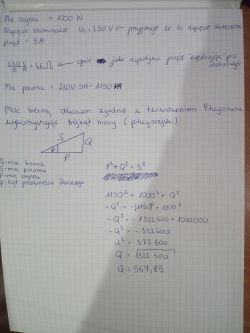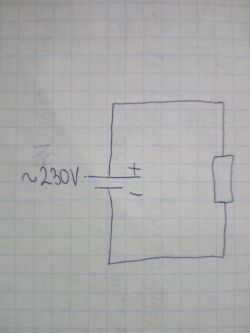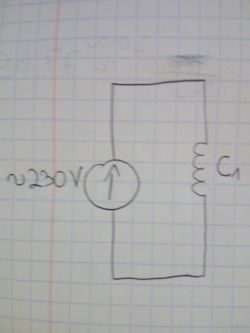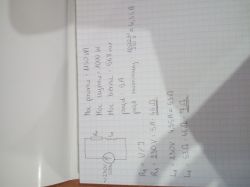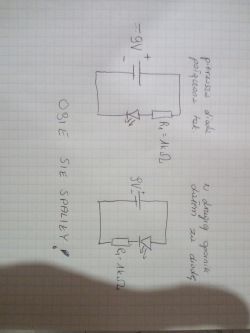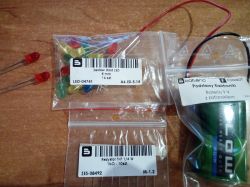Hello,
As I do not have any electrician I know to help me, I am asking you, dear colleagues, to check the task.
A current I = 5 A flows through the receiver with the rated power Pn = 1000 W and the rated voltage Un = 230 V. Calculate the apparent and reactive power dissipated in this receiver.
I read on the Internet that the apparent power is the maximum value of the current (i.e. the one with which the device is able to work without damage, but only for a short moment, a fraction of a second), it is said that it is the product of the RMS voltage and current intensity, so S = U * I
S = 230V * 5A = 1150 VA
so the apparent power is 1150 VA and the effective power is 1000W
However, the reactive power is said to be the difference between these two powers, so:
Q = 1150 VA - 1000 W = 150
As I do not have any electrician I know to help me, I am asking you, dear colleagues, to check the task.
A current I = 5 A flows through the receiver with the rated power Pn = 1000 W and the rated voltage Un = 230 V. Calculate the apparent and reactive power dissipated in this receiver.
I read on the Internet that the apparent power is the maximum value of the current (i.e. the one with which the device is able to work without damage, but only for a short moment, a fraction of a second), it is said that it is the product of the RMS voltage and current intensity, so S = U * I
S = 230V * 5A = 1150 VA
so the apparent power is 1150 VA and the effective power is 1000W
However, the reactive power is said to be the difference between these two powers, so:
Q = 1150 VA - 1000 W = 150



